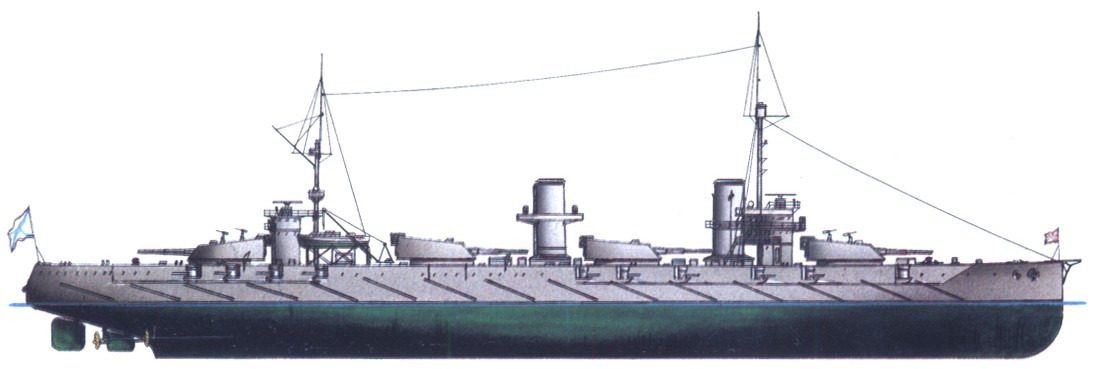- Yes
- No
TL;DR:
Bluewater vessel, did you know that the battleship Volya (ex-Imperator Aleksandr III) was actually commissioned into the Imperial Germany Navy right before the end of the war?
Overview:
The 2nd Imperatritsa Mariya-class battleship, Imperator Aleksandr III, renamed Volya (freedom) before its commissioning after the fall of the Russian monarchy, was only completed in 1917, long after the war for Russia had turned against it. Compared to Imperatritsa Mariya, it had its forward 2 casemates plated over to prevent water from entering it, had rangefinders installed on each turret, and had 4 Lender AA guns fitted atop the turrets. It saw no action against the Central Powers due to the state of the Black Sea Fleet after the Russian Revolution. In 1918 as the Germans advanced onto Sevastopol, it and the Black Sea Fleet sailed to Novorossiysk to escape capture. There, the captain of Volya initiated a vote among the crews, whether to scuttle their ships or return to Sevastopol and surrender their ships to the Germans. The other ships were mostly ambivalent or in favour of scuttling, but Volya’s crew decided to return to Sevastopol.
Having surrendered to the Germans, the German Mediterranean division planned to use the Volya as a substitute to the battlecruiser Goeben (Yavuz Sultan Selim), which had been damaged earlier in the year. As the Bolshevik government concluded the Treat of Brest-Litovsk, any captured Russian warships were to remain under German control until the cession of hostilities with the Entente. On the 1st of October 1918, German troops forcibly took control of Volya in case the crew had changed their minds. The crew of the battleship Rheinland, which had been recently decommissioned, were then tasked to man the last battleship of the Imperial German Navy, and it was officially commissioned on the 15th October under Captain Walter Isendahl. By November, the crew was experienced enough to begin sea and gunnery trials, but on the 6th of November all further training was ended because of unrest at home. The ship returned to Sevastopol, ironically the only remaining German battleship not undergoing general mutiny.
After the German surrender, Volya was transferred to possibly the provisional Ukrainian Government, but nevertheless ended up in British control. They would then hand it over to Denikin’s White Army, who renamed it General Alekseyev. By then it was in poor condition and the White armies lacked the coal and manpower to properly man it, but after months of training and repairs it was ready for battle. The White forces used it to conduct coastal bombardment on the Bolsheviks, but ultimately were defeated. With the defeat of the White forces, it and rest of the Imperial Black Sea Fleet, called Wrangel’s Fleet, escaped to first Constantinople, then Bizerte, French Tunisia, where it was interned. The ship was kept well-maintained by the Russian crew and a French stipend for the squadron. After France’s recognition of the Soviet Union, France took control of the ships, and negotiations began for the Soviet Union to acquire the ships. Unfortunately political pressure ended these negotiations, and General Alekseyev and the others were scrapped in 1933.
Specifications: (1918)
Armament:
4x3 12"/50 (305mm) Pattern 1907 (100 rpg, 70 rpg in forward 2 turrets)
18x1 130mm Pattern 1913 (100 rpg)
4x1 76mm Lender’s
4x1 450mm torpedo tubesArmour (Krupp cemented steel): (same as Imperatritsa Mariya, except forward 2 casemate positions are plated over)
262.5mm main belt
125mm fore belt
125mm aft belt
75-100mm upper belt
37.5mm main deck
25mm fore deck
25mm middle and lower decks
250mm turret face and sides
305mm turret rear
125mm turret roof
250mm turret upper barbettes
150 fore and aft turret lower barbettes
125 centre turret lower barbettes
100mm casemates
25mm screens between casemates
300mm conning towers
200mm fore conning tower roof
100mm aft conning tower roofDisplacement:
22 600 tons standard
23 400 tons fullLength: 168m
Beam: 27.4m
Draft: 8.65m
Propulsion: 4 Brown-Curtis steam turbines with 20 Yarrow boilers, 27 270 hp, driving 4 shafts
Speed: 20.9 knots (38.7 km/h)
Range: 1640 nmi (at 12 knots)
Crew: 1087 (crew count of Rheinland, whose sailors were requisitioned for Volya)
Systems:
4 5.5m Barr and Shroud rangefinders
2 5m Zeiss rangefinders
Images:
Sources:
McLaughlin, S., Apalʹkov, Yu. V., & Burns, T. A. (2021). The Imperatritsa Mariia Class. In Russian & Soviet battleships (pp. 228-242). Naval Institute Press.
Nottelmann, D. (2020). From Ironclads to Dreadnoughts: The Development of the German Navy 1864–1918. Warship International, 57(1), 49–55. https://www.jstor.org/stable/27142910.
Vinogradov, S. (2021). Warship Notes. (S. McLaughlin, Trans.) In J. Jordan & S. Dent (Eds.), Warship 2021 (pp. 363-373). Osprey.
Russian battleship Imperator Aleksandr III - Wikipedia
Архив фотографий кораблей русского и советского ВМФ.
IMPERATRITSA MARIYA battleships (1915 - 1917)
Images:
Category:Volya (ship, 1914) - Wikimedia Commons
https://www.history.navy.mil/our-collections/photography/numerical-list-of-images/nhhc-series/nh-series/NH-95000/NH-95288.html
https://war-book.ru/linejnye-korabli-tipa-imperatritsa-ma








